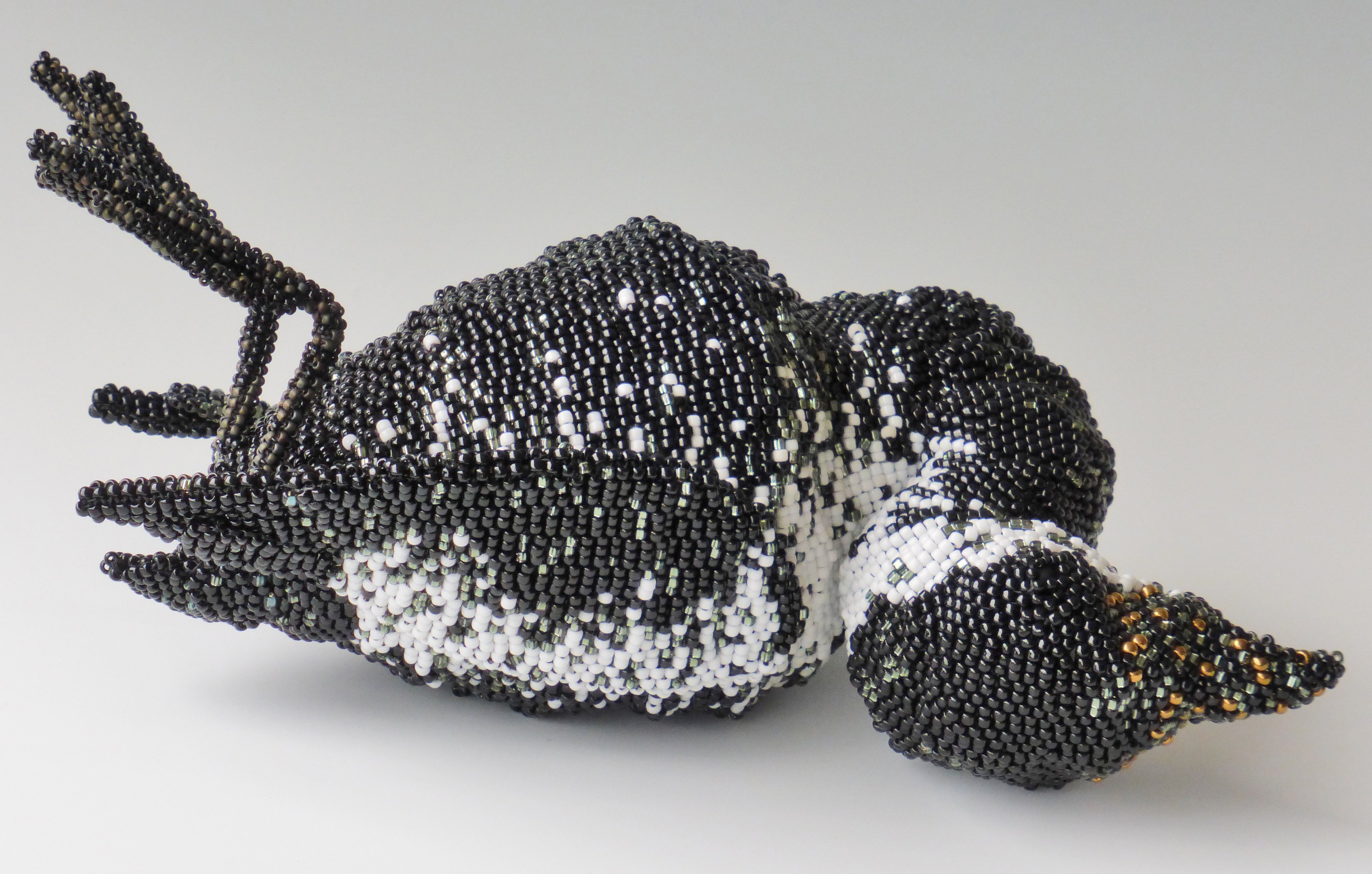Meet Beth Blankenship: our visiting artist from Anchorage, Alaska.
As a visual artist, Blankenship uses beads and threads to create stitched panoramas and delicately beaded and embroidered sculptures depicting underwater scenes, wildlife, and the way human impact both. Through Blankenship’s fiber narratives, she explores the human connection to the natural world; how all earthly things are linked by the smallest of threads, and how we humans can, willfully or unwittingly, alter those often-imperceptible connections.
Blankenship uses majority of two techniques to create her artwork: hand-stitching with thread and beads, and machine-stitching thread onto a water-soluble fiber base.
The Studio is excited to have Blankenship as one of our 2019 visiting artists! She will be teaching the workshop, Intro to Sculptural Beading“, on Sunday, June 2, 2019. Join Blankenship in the studio and learn all about the basics of sculptural beading and tricks you can incorporate when you work with larger and/or more complex forms in the future.

Contemporary Craft (CC): How would you best describe your work to someone who has never seen it before?
Beth Blankenship (BB): I tell stories with beads and threads. My 3-dimensional bead works are created using the sculptural peyote stitch technique – just thread and glass beads. The tension on the thread makes the beadwork hold its shape.
CC: How did you get started using beads in your work?
BB: When my daughter was in 5th grade, she came home from school one day with a pony bead gecko she had made in class. She was very proud of it and wanted to learn more ways to stitch with beads. I went to the library and checked out a book on bead embroidery, so we could learn together. She spent about five minutes on her beading project, but I was hooked.

CC: What was the first beaded piece you ever made?
BB: I covered a small vintage suitcase with bead embroidery for my very first piece of bead art (see the photo on the right); it took 14 months to complete. It was a part of a series of work about family that my oldest sister and I were collaborating on. I wanted a portrait on each side that was colorful and beautiful – beads were the perfect fit.
CC: How do you select the subject matter for each piece?
BB: Currently, my art is about the place where I live – Alaska. While I often depict the flora and fauna of the North, I also refer to the people who rely on them. Most of the wildlife in my work is a source of food as well as other useful materials in the subsistence culture of Alaska Natives. This culture has a deep regard for the earth and the animals that have, for millennia, been essential to survival in the cold, dark North.

CC: What is the hardest part about creating beaded work?
BB: Stitching with seed beads is very time-consuming and everyday life often gets in the way. I would say, making time to sit down and bead is the hardest part of creating beadwork.
Are you intrigued by Blankenship’s bead work and is ready to try it? After learning the basics of?peyote stitch, you can start to explore using the technique to create jewelry, sculptures, wall hangings, and more. Register for this June 2 visiting artist workshop, Intro to Sculptural Beading, today and secure your spot!

Blankenship’s work, Oiled Elder, is on view in Fiberart International 2019 at Contemporary Craft through August 24, 2019.
“30 years ago today, the Exxon Valdez ran aground and 10.8 million gallons of crude oil spilled into Prince William Sound. It killed hundreds of thousands of animals and devastated the livelihoods of many Alaskans. For the 10 months I worked on Oiled Eider, I reflected on the unending effects of this disaster. It?s important to share our story with those who live outside Alaska and I hope that Oiled Eider, will do that.”
Contemporary Craft’s Visiting Artist Program is supported by the Windgate Charitable Foundation.

